It’s not easy to start exercising again after taking a break. There are so many reasons why it’s NOT a good time to start, like being busy at work, not having enough time, not having the right equipment, it’s too cold out, it’s too nice out, my dog just had kittens, etc. You get the picture. It’s easy to find excuses, and you’re not alone.
If you can relate, then we have some excellent news for you: music has been proven to motivate people to perform better physically. So go home and crank a song that makes you want to dance around like a 12-year-old boy.
If you’re ready to test out this theory, I put together a 15-minute workout—high-energy Punjabi soundtrack included—for you to try out. No need to go anywhere. No need for any special equipment. Just you and your comfy clothes, in your living room, listening to tunes that will pump you up and help motivate you to workout.
The effects of music on exercise
McMaster University researchers explored the effects of music on exercise and proved that listening to music can improve your performance and help you to enjoy exercising more while you’re doing it. You likely didn’t need a study done to tell you, though. Music makes most Punjabis want to get up and dance because it makes you feel good.
Studies also show that faster-paced music tends to help improve athletic performance. Not only will music get you going, but it may also give you more bang for your buck while exercising. They found that music provided psychological and physiological benefits during intense exercise, which can lead to endurance. In fact, listening to great tunes can actually make it feel like exercise is easier to do.
While outdoor cricket in the winter would result in no-shows and indoor kabaddi is simply a no-go right now, there are other easy ways you can get moving. Here’s a quick workout routine you can do at home, paired with a few high-energy Punjabi songs to help amp you up while you get your sweat on.
The 15-minute routine you can do right now

Mountain Climber
Song: “Jamaica to India” by Emiway Bantai, Chris Gayle
Duration: 3:46 mins
- Get on your hands and toes. Bring one knee to your chest and extend it back out, then bring your other knee to your chest and extend it back.
- This can be done slowly, or you can turn it into a fast jogging-type motion for higher intensity.
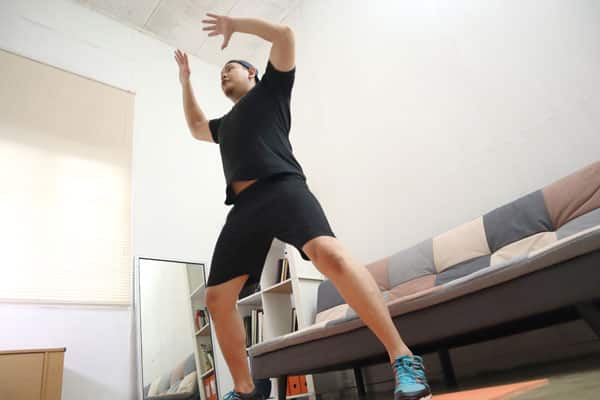
Jumping Jacks
Song: “Talja” by Jassa Dhillon, Deepak Dhillion, Gur Sidhu
Duration: 4:00 mins
You can do the standard jumping jacks, or to take it up a notch, try the overhead press jack.
Overhead press jack:
- Hold a weight and press it over your head with each jump.
- Don’t have a weight? Simply extend your arms up above your head with each jump.
You also can try the step jack.
Step Jack:
- Instead of jumping both feet out at the same time, you step one foot to the side, bring it back to the starting position, and then step the other foot out to the side.
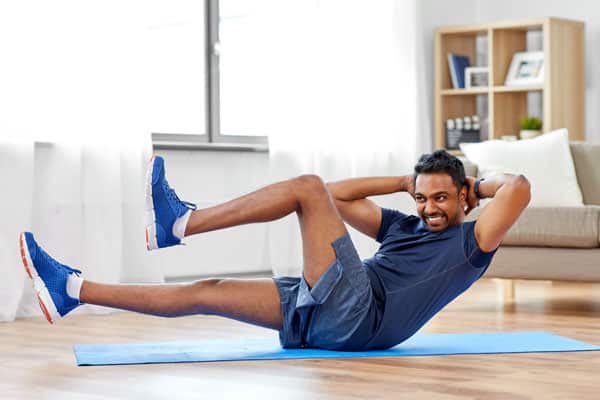
Crunches / Sit Ups
Song: “Bam Bholle” by Viruss
Duration: 3:38 mins
- How many can you do? Find out your baseline and then increase that number by 3 every time. Crunch is the easier version where you lift your torso up partway. The sit-up brings you up all the way.
- If you want to make it more intense, you can add your legs in. By pulling one knee up to your elbows with each sit-up and switching knees each time, it creates a dynamic exercise.
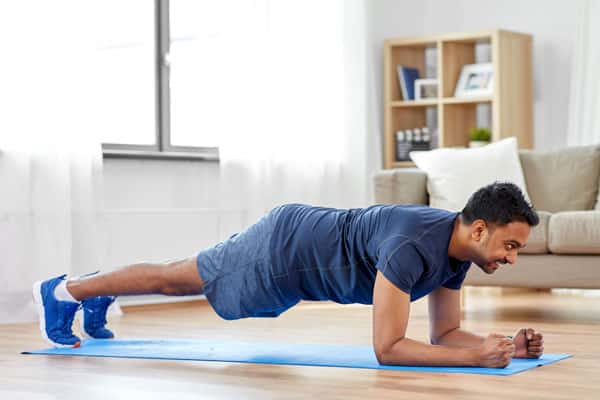
Plank
Song: “Fight Back” by NEFFEX
Duration: 3:20 mins
- Finish this routine off with a good old-fashioned plank. See how long you can hold it, and every day you do it, try increasing this number by 5 seconds.
- This is the perfect zone-out-to-the-music type of exercise. The more your mind is into the song, the less you’ll be feeling the strain, and the longer you should be able to work your core.
- Break for 20-30 seconds, and then hold the plank for as long as you can. Repeat until the song is over. Mind over matter!
May the routine be with you
Obi-Wan Kenobi may have said, “May the Force be with you,” but wise are the ones who find the strength within to create a routine they can stick to.
Here’s what can help you to start a new exercise routine:
- Get your workout gear ready the day before. This may seem like it shouldn’t make a difference, but trust me, it does. Stumble out of bed, throw on your workout clothes, and you’re halfway there!
- Have your playlist loaded up and waiting for you. Next time you’re laying in bed thinking about exercising but just can’t seem to get up and get moving, blast that playlist, and it’ll have you up and at ‘em in no time.
- It’s a matter of seconds. You might not know that it only takes 5 seconds to put a plan into action. That way, all you have to do in the morning is get up, and the routine will take over, especially the more often you do it.
What’s the right amount of time to exercise?
Are we talking about exercising for an album’s worth of songs? Or the top 4 songs you love this week? The truth is, you don’t need to start off with an hour of exercise a day to notice positive changes since all the exercise you get in a week adds up. 15 minutes of moderate to vigorous activity in a day is manageable, can help you to feel better, and it’s a great start. That’s the most important thing.
The Heart and Stroke Foundation recommends that you get active at least 150 minutes per week or 30 minutes 5 days a week. It doesn’t need to be continuous exercise. Build on my 15-minute routine by taking a 15-minute brisk walk around the block, and you’ll hit the 150-minute mark in no time!
A few minutes of exercise can reduce the risk of many health complications such as stroke, coronary artery disease, hypertension, colon cancer, osteoporosis, etc. When you think of it that way, why not get your body moving?
What type of workout music pumps you up? Share them in the comments below!
The article was originally published on November 26, 2020.

Men’s Health Checklist
Find out what tests you need and when. Stay up-to-date on screening, exams and vaccines, and assess how stress impacts your mental health.
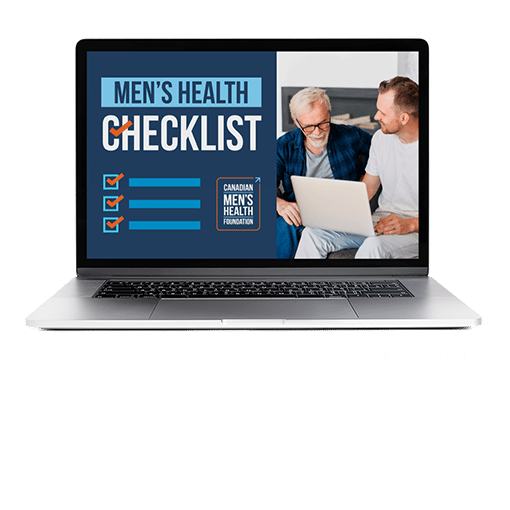
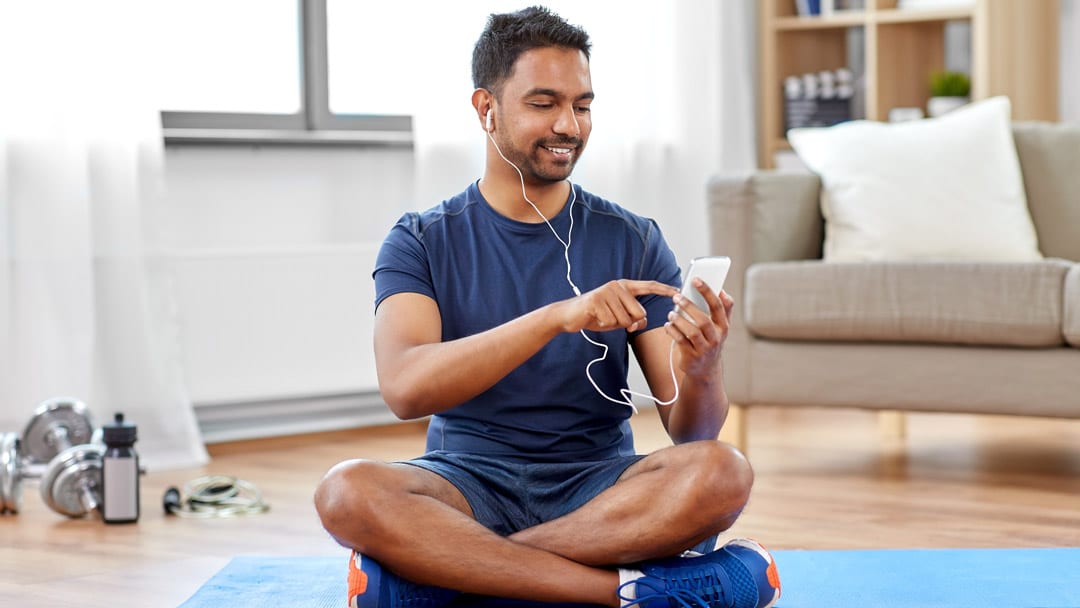

Let’s Talk!
Did you enjoy this article? Let us know in the comments.
0 Comments